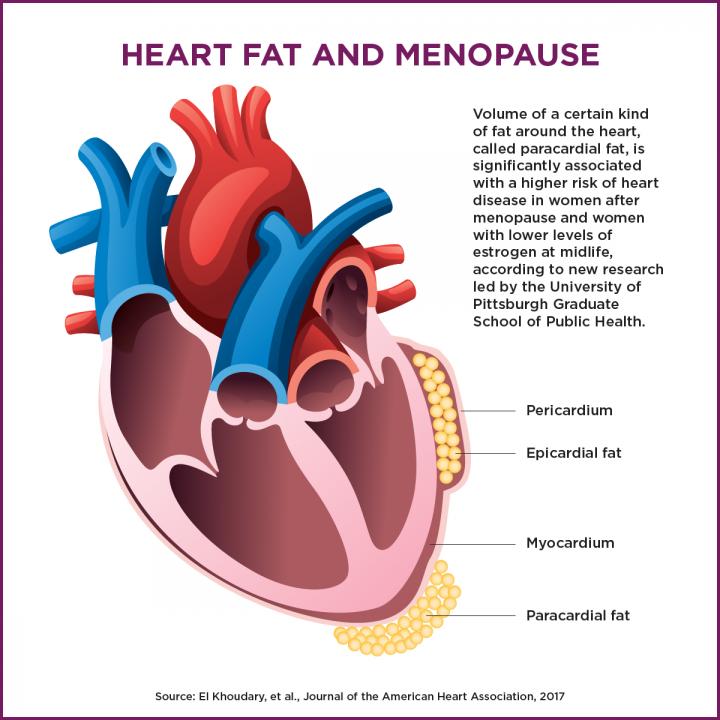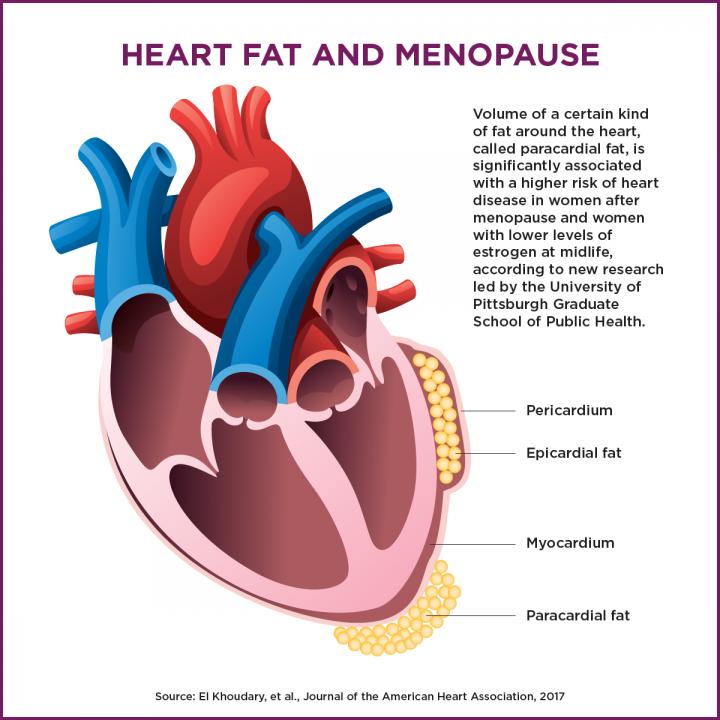
Credit: Rick Sciullo/UPMC
PITTSBURGH, Jan. 30, 2017 – A higher volume of a certain type of fat that surrounds the heart is significantly associated with a higher risk of heart disease in women after menopause and women with lower levels of estrogen at midlife, according to new research led by the University of Pittsburgh Graduate School of Public Health.
The findings reveal a previously unknown, menopause-specific indicator of heart disease risk, pointing to potential strategies to reduce that risk and a target for future studies on the impact of hormone replacement therapy in improving cardiovascular health. The results are published online today in the Journal of the American Heart Association.
"For the first time, we've pinpointed the type of heart fat, linked it to a risk factor for heart disease and shown that menopausal status and estrogen levels are critical modifying factors of its associated risk in women," said lead author Samar R. El Khoudary, Ph.D., M.P.H., assistant professor in Pitt Public Health's Department of Epidemiology.
There are two types of fat surrounding the heart:
- Epicardial fat, the fat that directly covers the heart tissue (the myocardium) and is located between the outside of the heart and the pericardium (the membrane that encases the heart). It is the energy source for the heart.
- Paracardial fat, which is outside the pericardium, anterior to the epicardial fat. There are no known heart-protective functions of this fat.
El Khoudary and her team evaluated clinical data, including blood samples and heart CT scans, on 478 women from Pittsburgh and Chicago enrolled in the Study of Women's Health Across the Nation (SWAN). The women were in varying stages of menopause, averaged 51 years old and were not on hormone replacement therapy.
In a previous study, the team showed that a greater volume of paracardial fat, but not epicardial fat, after menopause is explained by a decline in the sex hormone estradiol–the most potent estrogen–in midlife women. The higher volume of epicardial fat was tied to other risk factors, such as obesity.
In the new study, the researchers built on those findings to discover that not only is a greater paracardial fat volume specific to menopause, but–in postmenopausal women and women with lower levels of estradiol–it's also associated with a greater risk of coronary artery calcification, an early sign of heart disease that is measured with a heart CT scan.
In the women studied, an increase in paracardial fat volume from the 25th percentile to the 75th percentile (corresponding to 60 percent increase) was associated with a 160 percent higher risk of coronary artery calcification and a 45 percent increase in the extent of coronary artery calcification in postmenopausal women compared with pre- or early-menopausal women.
"Clearly, epicardial and paracardial fat are distinct types of heart fat that are found to be greater in postmenopausal women for different reasons with different effects on heart disease risk–and thus should be evaluated separately when searching for ways to help women avoid heart disease," said El Khoudary.
A recent analysis of previous research found that heart fat volumes could be reduced successfully with dieting and bariatric surgery. Given the uncertainty about the cardio-protective effects of hormone replacement therapy, as well as the lack of research on the impact of such therapy on heart fat volumes, El Khoudary is planning a study to evaluate hormone replacement therapy on heart fat accumulation, paying particular attention to the types of heart fat.
###
Additional authors on this study are senior author Karen A. Matthews, Ph.D., of Pitt; and co-authors Kelly J. Shields, Ph.D., of Allegheny Health Network; Imke Janssen, Ph.D., and Lynda H. Powell, Ph.D., both of Rush University Medical Center; Matthew Budoff, M.D., of the Los Angeles Biomedical Research Institute; and Susan A. Everson-Rose, Ph.D., of the University of Minnesota Medical School.
This research was supported by National Institutes of Health grants U01NR004061, U01AG012505, U01AG012535, U01AG012531, U01AG012539, U01AG012546, U01AG012553, U01AG012554, U01AG012495, HL065581 and HL065591; and American Heart Association grant 12CRP11900031.
About the University of Pittsburgh Graduate School of Public Health
The University of Pittsburgh Graduate School of Public Health, founded in 1948 and now one of the top-ranked schools of public health in the United States, conducts research on public health and medical care that improves the lives of millions of people around the world. Pitt Public Health is a leader in devising new methods to prevent and treat cardiovascular diseases, HIV/AIDS, cancer and other important public health problems. For more information about Pitt Public Health, visit the school's Web site at http://www.publichealth.pitt.edu.
http://www.upmc.com/media
Media Contact
Allison Hydzik
[email protected]
412-647-9975
@UPMCnews
http://www.upmc.com/Pages/default.aspx





